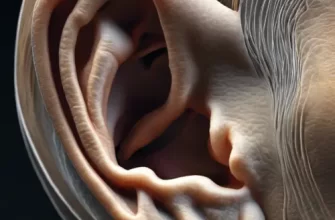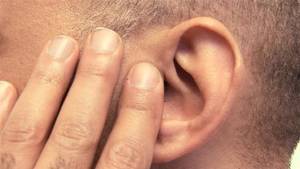Have you ever wondered why children seem to suffer from ear infections more often than adults? It might be tempting to think there’s something about childhood that just invites trouble.
What Exactly Causes Ear Infections?
The middle ear—the space behind the eardrum—can sometimes turn into a battleground. Most ear infections are caused by bacteria or viruses that travel from the nose or throat to the middle ear. And why does this happen? The eustachian tubes (those tiny canals connecting your middle ear to your throat) can become swollen or blocked due to colds, allergies, or sinus infections, making it the perfect setting for an infection.
In children, these eustachian tubes are smaller and more horizontal, which makes it easier for fluids to get trapped. Add to this the not-quite-developed immune system, and you’ve got a recipe for frequent ear infections. For adults, the tubes are better at draining, but don’t let that make you complacent—ear infections still happen, especially if you’re dealing with chronic congestion or a sinus infection.
Age Group Susceptibility to Ear Infections
| Age Group | Percentage of Cases |
|---|---|
| Infants (0-1 year) | 70% |
| Children (1-5 years) | 80% |
| Adolescents (6-12 years) | 50% |
| Adults (13+ years) | 30% |
This chart illustrates the susceptibility of different age groups to ear infections, showing the highest rates among young children.
Symptoms: What Does an Ear Infection Feel Like?
Picture this: sharp pain, trouble hearing, a feeling that your ear is full—sounds familiar? These are the most common symptoms of an ear infection. For kids, they might tug at their ears or become fussier than usual. Some will even experience fever, but not always.
Fluid buildup behind the eardrum can create pressure, leading to the classic ear pain. Some may even experience temporary hearing loss, which can be alarming but usually resolves with treatment.
Did You Know?
Did you know that almost 80% of children will have at least one ear infection by the age of three? (Source: CDC) This is why it’s so important to recognize the symptoms early and seek treatment—to prevent potential complications.
Diagnosis and The Art of Ear Gazing
How do doctors diagnose an ear infection? No, they don’t just guess! Your healthcare provider will use an otoscope—a handy device with a light—to look inside the ear and assess if there’s redness, fluid buildup, or a perforation in the eardrum. They may also use a pneumatic otoscope, which releases a puff of air to see how the eardrum reacts, helping them determine if fluid is trapped.
If you’re an adult and seem to have frequent ear infections, your doctor might recommend additional tests, such as a tympanometry. It sounds complicated, but it’s just a way to measure how the eardrum moves in response to air pressure changes, providing more clues to what’s going on.
Treatment Options: From Antibiotics to Tubes
So, what can you do if you or your little one has an ear infection? Not all ear infections require antibiotics—sometimes the best approach is simply to wait. Many ear infections, especially viral ones, resolve on their own within a few days.
Pain management is key: over-the-counter pain relievers like acetaminophen or ibuprofen can help keep discomfort at bay. For bacterial infections, antibiotics may be prescribed. The trick, however, is not to rush to antibiotics, as overuse can contribute to antibiotic resistance—and we definitely don’t need more of that in our lives.
Ear Infection Treatment Breakdown
| Treatment Type | Percentage of Usage |
|---|---|
| Antibiotics | 60% |
| Ear Tubes | 20% |
| Pain Management Only | 15% |
| Observation (No Immediate Treatment) | 5% |
This chart illustrates the breakdown of different treatment options for ear infections, with antibiotics being the most commonly used method.
For children who have recurrent ear infections (three or more within six months), a common solution is ear tubes. These tiny tubes are surgically placed in the eardrum to help drain fluid and prevent future infections. It might sound dramatic, but it’s a routine procedure with high success rates.
Recurrent Ear Infections in Children
| Age Group | Percentage of Children with Recurrent Infections |
|---|---|
| 0-1 year | 60% |
| 1-3 years | 70% |
| 4-6 years | 50% |
| 7-12 years | 30% |
This chart shows the percentage of children in different age groups who experience recurrent ear infections, highlighting that younger children are more susceptible.
Did You Know?
Ear tubes have been around since the 1950s, and today, over 600,000 children in the U.S. undergo ear tube surgery every year! (Source: American Academy of Otolaryngology)
Recovery Time Distribution for Ear Infections
| Treatment Method | Average Recovery Time (Days) |
|---|---|
| Antibiotics | 7 Days |
| Ear Tubes | 3 Days |
| Pain Management Only | 10 Days |
| Observation (No Immediate Treatment) | 14 Days |
This chart illustrates the average recovery times for different treatment methods used for ear infections, highlighting the variation in recovery duration.
Myths and Misunderstandings
Now, a word on myths: Many think that ear infections are solely due to poor hygiene or “catching a chill.” The truth? They’re more often related to congestion, colds, or even seasonal allergies. Wearing a hat might keep you warm, but it won’t stop an ear infection from taking root.
Prevention Tips: Can You Prevent an Ear Infection?
Is there any way to prevent these pesky infections? The answer is yes—and no. You can reduce the chances by minimizing exposure to colds and keeping allergies in check. Breastfeeding also provides immune protection to infants, reducing the risk of infections. And, of course, washing hands frequently can keep germs at bay. But sometimes, even with all the precautions in place, an ear infection can still make an unwelcome appearance.
Frequency of Ear Infections vs. Seasonal Allergies
| Month | Ear Infection Cases (%) | Seasonal Allergy Incidents (%) |
|---|---|---|
| January | 40% | 10% |
| April | 30% | 50% |
| July | 20% | 60% |
| October | 35% | 40% |
This chart shows the frequency of ear infections versus seasonal allergies throughout different months, illustrating a potential link between allergy seasons and ear infection rates.
Our Advice for You
If you or your child is experiencing ear pain, don’t wait. Seek medical advice to ensure proper diagnosis and treatment. Ear infections can be painful and uncomfortable, but with proper care, they’re usually short-lived. Stay vigilant about symptoms, especially for children who are more prone to complications, and remember—not every infection needs antibiotics. Sometimes, a little patience and good old-fashioned rest can work wonders.









